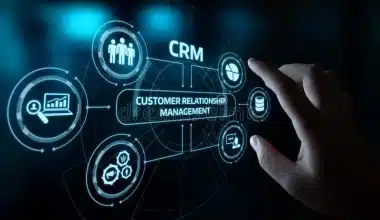Departmentalization is the process of dividing an organization’s activities into smaller units or departments based on specific criteria such as function, product, customer, process, or geography. The aim is to create specialized units with a clear line of authority and responsibility to improve efficiency and communication, and better manage human and other resources. In this article, we illustrated more about what departmentalization is all about and it provides a framework for organizing work and allocating resources effectively. There are different types of departmentalization including functional, product, customer, geographic, process, and matrix. Each type of departmentalization has its advantages and disadvantages.
What is Departmentalization?
Departmentalization is a process that involves dividing an organization into smaller units or departments based on the tasks and activities that need to be performed. It’s a way of grouping people, work, and resources into teams or functional areas to achieve specific goals. Departmentalization involves breaking down an organization into smaller units that can work together efficiently to achieve its goals. Effective departmentalization promotes clear lines of authority and communication, enhances specialization and expertise, improves coordination and collaboration, and facilitates efficient resource allocation.
There are several bases for departmentalization, they include:
#1. Function
This involves grouping activities based on similar functions or tasks, such as marketing, finance, human resources, production, and so on. Each department focuses on performing specific functions within the organization.
#2. Product
In product departmentalization, the organization is divided based on the specific products or services it offers. This type of departmentalization is often seen in large companies that have diverse product lines. Each department is responsible for a particular product or product group, allowing for focused attention and expertise.
#3. Geographic
Geographic departmentalization is employed when an organization operates in multiple geographical regions or locations. It involves grouping activities and resources based on different geographic areas or regions.
#4. Customer
Customer departmentalization involves organizing activities based on different customer groups or market segments. By creating departments focused on specific customer groups, organizations can better serve their diverse customer base.
#5. Process
Process departmentalization is based on the different stages or processes involved in production or service delivery. Each department focuses on a specific stage or process, such as research and development, design, manufacturing, quality control, or distribution.
#6. Matrix
Matrix departmentalization combines two or more bases of departmentalization simultaneously. It involves creating cross-functional teams or groups that are organized around both functions and projects.
Departmentalization by Function
Departmentalization by function is also known as functional departmentalization. It is one of the most common and traditional methods of organizing activities within an organization. It involves grouping employees and resources based on the functions or specialized tasks they perform. Each department focuses on a specific function or activity. Such as marketing, finance, human resources, production, research and development, and so on.
Characteristics and Advantages of Departmentalization by Function
#1. Specialization
Each department becomes responsible for a specific function, allowing employees to develop expertise and specialized skills in their respective areas. This specialization can lead to increased efficiency and productivity as employees become proficient in their designated roles.
#2. Clear Reporting Lines
Departmentalization by function establishes clear reporting lines within the organization. Employees know who their immediate superiors are and to whom they should report.
#3. Economies of Scale
By grouping similar functions, organizations can achieve economies of scale. They can centralize resources, streamline processes, and leverage shared expertise and resources across departments.
#4. Skill Development
Departmentalization by function provides employees with opportunities for skill development within their specialized areas.
#5. Coordination and Collaboration
Effective coordination ensures that various functions work together harmoniously to achieve organizational goals.
#6. Performance Measurement
Departmentalization by function facilitates the measurement of performance within each department. Key performance indicators (KPIs) can be established for each function, allowing for monitoring, evaluation, and improvement of departmental performance.
Disadvantages of Departmentalization by Function:
#1. Limited Focus
Employees within each department may become too focused on their specialized tasks and functions, potentially losing sight of the broader organizational goals. This can hinder innovation and collaboration across functions.
#2. Lack of Flexibility
Functional departments may become rigid and resistant to change.
#3. Communication Barriers
Interdepartmental coordination and communication may become challenging, leading to delays, misunderstandings, or conflicts.
#4. Slow Decision-Making
Decision-making can be slower in functional departments as decisions often need to be approved by multiple levels of management within each function.
Departmentalization By Product
Departmentalization by-product is also known as product departmentalization. This is a method of organizing activities within an organization based on the specific products or product lines it offers. The organization is divided into departments or units, with each department responsible for a particular product or product group.
Advantages of Departmentalization by Product
#1. Product Focus
Each department is dedicated to a specific product or product line. This allows for a concentrated focus on understanding, developing, producing, marketing, and servicing the particular product.
#2. Accountability and Ownership
With product departmentalization, there is a clear sense of accountability and ownership within each department. The department heads or managers are responsible for the performance, profitability, and success of their specific products.
#3. Customer-centric Approach
Organizing departments by product aligns with a customer-centric approach. It allows for tailored strategies and efforts to meet specific needs.
#4. Innovation and Product Development
Product departmentalization promotes innovation and product development within each department.
#5. Performance Measurement
Departmentalization of by-products allows for clear measurement and evaluation of the performance of each product or product line.
#6. Resource Allocation
By organizing departments by product, resource allocation can be optimized. Departments can have the necessary resources, personnel, and budgets aligned specifically for their respective products.
Disadvantages of Departmentalization by Product
#1. Duplication of Functions
Each product department may have its dedicated functions, such as marketing, finance, and human resources.
#2. Coordination and Communication
Interdepartmental coordination and communication become crucial when different product departments need to collaborate or share resources.
#3. Management Complexity
Managing multiple product departments requires effective coordination and oversight from top-level management.
#4. Scalability
As the organization grows and introduces new products, managing an increasing number of product departments can become complex and challenging to sustain.
Customer Departmentalization
Customer departmentalization is also known as departmentalization by customers. This is a method of organizing activities within an organization based on different customer groups or market segments. In this approach, the organization is divided into departments or units. Each department is responsible for serving a specific customer segment or type of customer.
Advantages of Customer Departmentalization
#1. Customer Focus
Each department is dedicated to serving a specific customer segment. This allows for tailored strategies, marketing approaches, and customer service efforts.
#2. Market Specialization
By organizing departments around different customer segments, organizations can develop expertise and specialized knowledge about each group.
#3. Customized Offerings
By understanding the distinct preferences and requirements of different customer groups, organizations can offer personalized solutions and experiences.
#4. Enhanced Customer Service
With customer departmentalization, departments can focus on providing exceptional customer service to their designated customer segments.
#5. Market Research and Feedback
Customer-focused departments can actively engage with customers through surveys, focus groups, or direct interactions to gather feedback and improve their offerings.
#6. Cross-functional Collaboration
Collaboration across departments ensures that the organization maintains a unified customer experience across different touchpoints.
Disadvantages of Customer Departmentalization
#1. Complexity and Resource Allocation
Organizing departments by customer segment can increase the complexity of managing multiple departments and allocating resources effectively.
#2. Integration with other Departmentalization
Customer departmentalization should be integrated with other departmentalization approaches.
Departmentation by Process
Departmentalization by the process can also be called process departmentalization. This is a method of organizing activities within an organization. It is based on the different stages or processes involved in the production or service delivery.
Advantages of Departmentalization by Process
#1. Specialization and Expertise
Each department focuses on a specific process, allowing employees to develop specialized knowledge and expertise in their designated area.
#2. Clear Workflow and Accountability
Departmentalization by process establishes a clear workflow and accountability for each stage of the process.
#3. Efficient Resource Allocation
By organizing departments around different processes, resources such as equipment, and personnel can be allocated specifically to support each process.
#4. Effective Quality Control
Departmentalization by process allows for focused quality control within each department.
#5. Process Optimization
Each department can focus on improving and optimizing its designated process.
#6. Interdepartmental Coordination
Clear communication channels, cross-functional teams, and regular interdepartmental meetings help in optimizing the overall workflow.
Disadvantages of Departmentalization by Process
#1. Lack of Integration
Process departmentalization may result in departments becoming too focused on their specific processes. This leads to a lack of integration of the overall workflow.
#2. Duplication of Functions
There may be overlaps or duplications of certain functions or activities across different departments.
#3. Communication and Handoff Challenges
Effective communication and handoffs between departments become critical in process departmentalization.
#4. Complexity and Management Coordination
It can be challenging to balance the autonomy and integration of each department while ensuring that the overall process flow is optimized.
What does Departmentalization Mean?
Departmentalization refers to the process of dividing an organization or a company into smaller groups or departments. This is done to improve efficiency and to help ensure that each department or team is focused on specific tasks or goals. By segmenting the work in this way, it becomes easier to manage and coordinate efforts. Different departments may be based on factors like product lines, geographic regions, functions, or project teams.
What is the Function of Departmentalization?
The function of departmentalization in an organization is to facilitate the effective and efficient management of activities, resources, and people.
Departmentalization serves several important functions, including:
- Coordination
- Specialization
- Accountability
- Decision-making
- Resource allocation
- Communication and coordination
- Performance evaluation
What are 3 Examples of Functional Departmentalization?
Three examples of functional departmentalization are:
Finance department: This department focuses on financial activities such as accounting, financial planning and analysis, treasury management, tax, and audit.
Marketing department: This department focuses on the promotion and sale of the organization’s products or services. It includes activities such as market research, advertising, branding, product management, and sales operations.
Human resources department: This department manages the organization’s workforce and is responsible for activities such as recruitment, training, and development. It is also responsible for compensation and benefits, employee relations, and performance management.
What are the Types of Departmentalization?
There are various types of departmentalization, they include:
- Functional departmentalization: Grouping jobs and tasks based on functions they perform, such as marketing, accounting, or production.
- Product departmentalization: Division of jobs and tasks based on different products they handle, such as clothing, automobiles, or software.
- Customer departmentalization: Separating jobs and tasks by different types or groups of customers, such as industrial clients, individual buyers, or government agencies.
- Geographic departmentalization: Grouping jobs and tasks based on regions or locations where they are located, such as states, cities, or countries.
- Process departmentalization: Division of tasks based on different stages of a process, for instance, manufacturing or assembling.
- Matrix departmentalization: Used when a project or cross-functional team is set up for a specific task and disbanded after completion.
- Time-based departmentalization: Used when tasks and duties are grouped based on time duration allocated to specific activities or tasks. Such as seasonal or time-bound projects.
What are the Methods of Departmentalization?
There are several methods of departmentalization, which are used to group activities, tasks, and people within an organization.
Methods of departmentation include:
- Functional Departmentation
- Product Departmentation
- Customer Departmentation
- Geographic Departmentation
- Process Departmentation
- Matrix Departmentation
- Project Departmentalization
Organizations may use one or a combination of these methods of departmentation, depending on their size, industry, organizational structure, and strategic objectives.
Conclusion
The choice of departmentalization method depends on the nature of the work, goals, and specific needs of the organization. Organizations may employ a single method of departmentalization or a combination of methods. It can depend on their size, industry, organizational structure, and strategic objectives. The choice of departmentalization method aims to facilitate coordination, specialization, and efficient resource allocation.
Effective departmentalization requires a balance between autonomy and integration, as well as coordination among different departments. By dividing people into groups that handle specific processes, the company can minimize production costs and maximize efficiency. The chosen departmentalization method(s) should reflect the company’s overall goals, objectives, and unique circumstances. By using the right departmentalization method, the company can improve efficiency, and communication, and promote company growth. Regular communication, collaboration, and coordination among departments are crucial to ensuring the overall success of the organization and the achievement of its strategic objectives.
Related Articles
- WHAT ARE THE LEVELS OF MANAGEMENT AND THEIR FUNCTIONS?
- KEY FUNCTIONS OF THE HR DEPARTMENT: All You Need To Know
- FACILITIES MANAGEMENT: Definition, Functions, and Importance
- ENTERPRISE RESOURCE PLANNING: (ERP) Examples, System, Function & Workday
- CROSS-FUNCTIONAL TEAMS: Benefits & How They Work






